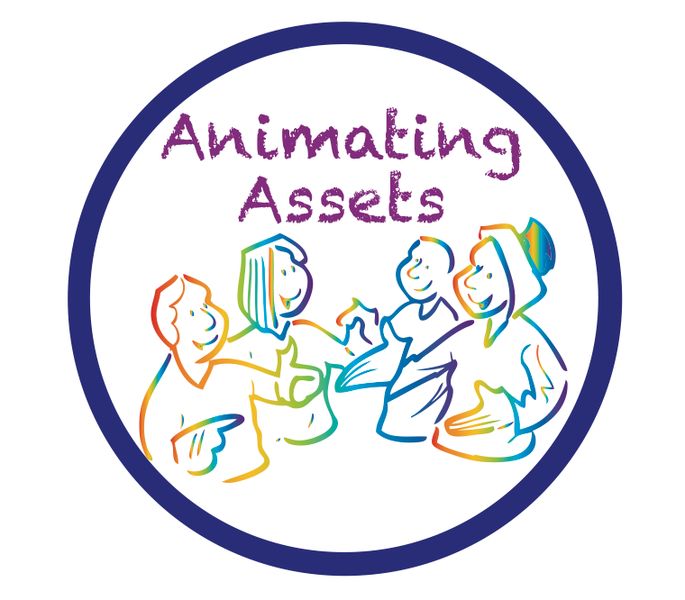
A walkabout with Connecting Milton action research hub
Animating Assets is an action research project that GCPH is working on in partnership with the Scottish Community Development Centre (SCDC).
 The project is working with different community sites across Scotland to design, test, and gather evidence of changes arising from taking an asset-based approach to improving community health and wellbeing. These community sites are seen as ‘action research hubs’ that maintain a focus on the local context, and start from that context as they seek to generate fresh ways of thinking about assets in practice.
The project is working with different community sites across Scotland to design, test, and gather evidence of changes arising from taking an asset-based approach to improving community health and wellbeing. These community sites are seen as ‘action research hubs’ that maintain a focus on the local context, and start from that context as they seek to generate fresh ways of thinking about assets in practice.
As highlighted in a previous blog, asset-based approaches are very much about seeing people and communities in terms of what they have (their assets) rather than what they don’t have (their needs) and recognising “that communities and individuals often labelled deprived are rich in relationships, resourcefulness and social, personal and material assets”.
Local assets and action research
Indeed, identifying local assets and working to connect them with one another was described by Kretzmann and McKnight (1996) as “the key to neighbourhood regeneration”. Hence the fit with action research, which aims to generate knowledge about social systems, such as communities, while working with community members to bring about change, and to reflect on that process.
Animating Assets is thus using a blend of traditional approaches to community development alongside participative research methods. One example of this was during a community walkabout in Milton, which is located in the North West of Glasgow.
On a crisp, wintery morning we set out on a walkabout around Milton. The intention was to bring a range of interested people together, and go out and see for ourselves the assets and needs around Milton. Around 15 of us headed off from Milton Community Campus and made our way to the Milton Community Garden. The Community Gardener gave us a tour of the site, highlighting the extent of hard landscaping work that community members had contributed.
Despite the time of year, there was plenty growing in the raised beds, and the polytunnel provided a welcome break from the chilly weather!
More people joined us as we made our way past a local school, church, housing and private gardens, as well as areas of disused land. Next stop was the offices of LoveMilton for a well-earned cup of tea.
Finally, we visited The Huts. A recently refurbished community facility that provides a central point for community activities, from Healthy Cooking courses to drop-in facilities for young people.
During the walkabout everyone was encouraged to take photographs of what they saw as assets, needs and areas for action in Milton.
Disposable cameras were provided, but people also used their own phones and tablets. The intention was to develop a collection of photos that could be used later to stimulate discussion about asset-based health and wellbeing interventions.
The next step will be to collate the photos, and present them back to participants as part of a reflective discussion about the walkabout and the wider assets landscape within Milton. This reflection will involve asking what particular photos mean to people, why they are significant, and whether the asset-based approach of the Animating Assets project has influenced their thinking in relation to these images. It may also be possible to identify key themes arising from the discussion around the photos.
Participatory evaluation approaches
These three stages of taking photos, reflecting on the photos, and identifying key themes is similar to an approach called Photovoice. Patricia Rogers provides an overview of Photovoice alongside a number of participatory evaluation approaches, such as community mapping of resources. We hope to use the photos and reflections as part of developing more in depth digital stories with each of the Animating Assets community sites.
We are thus bringing together a traditional community development technique (the walkabout) with a participative research method (Photovoice). I am really looking forward to seeing how this develops, and what insights it gives us into asset-based approaches.